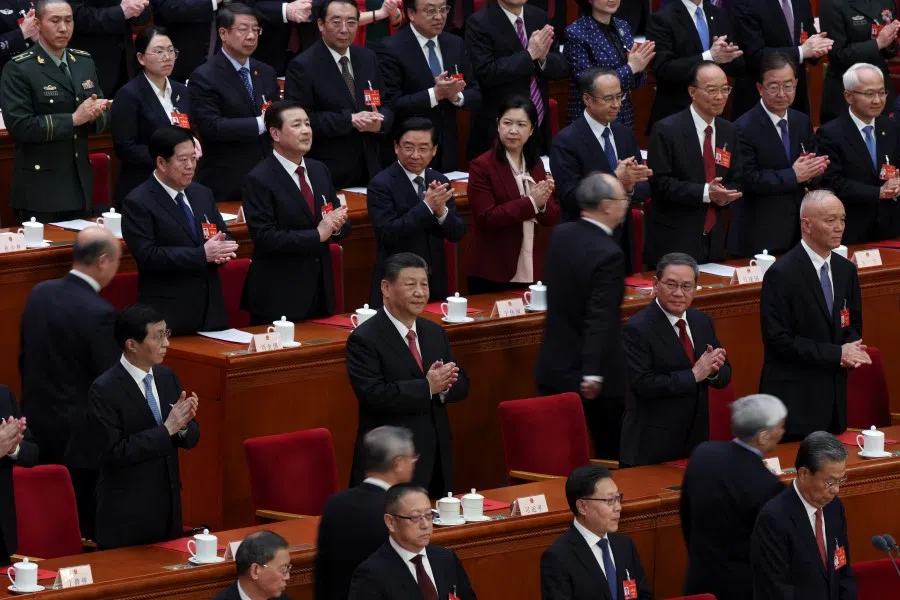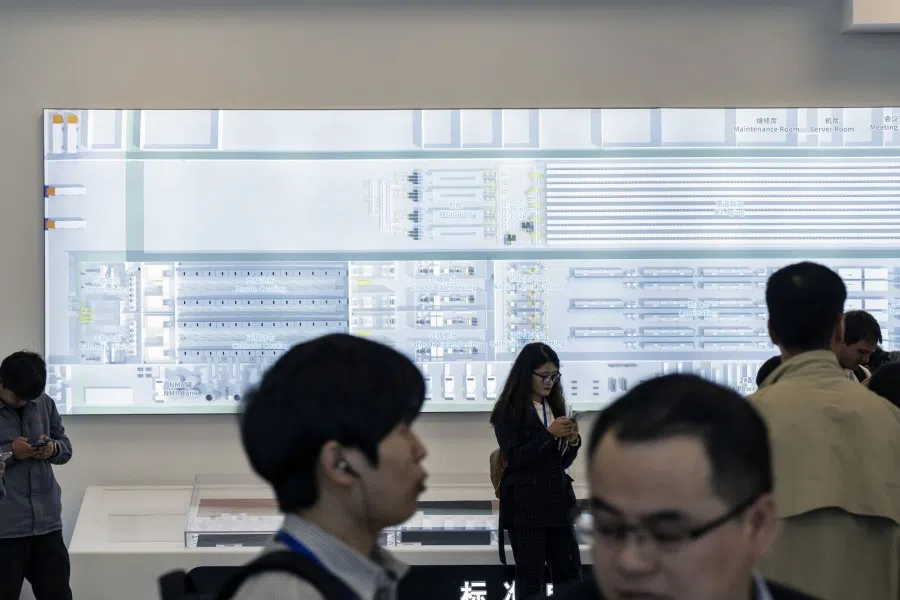‘New quality productive forces’ to revamp economy: Can China succeed?
In analysing Chinese Minister of Science and Technology Yin Hejun’s article on “new quality productive forces”, academic Erik Baark notes that the word “quality” between the phrases “new productive forces” and “new quality productive forces” may make all the difference in China’s efforts to boost science and technology for high-quality development.

In early March 2024, Western and English-language media were reporting extensively on President Xi Jinping’s recent strategic policy statements, with Reuters headline titled “China’s Xi Jinping Summons ‘New Productive Forces’, but Old Questions Linger” and Bloomberg arguing that “Xi Wants ‘New Productive Forces’ to Fit Local Conditions”.
At the same time, Chinese state media China Daily’s headline was “New Quality Productive Forces to Inject Momentum into Economy”, while the English-language version of Xinhua News seeks to clarify the concept as a dictionary entry: “Xictionary: New Quality Productive Forces”, emphasising that Xi proposed to accelerate efforts to foster new growth drivers and promote high-quality development. Does the little word “quality” make a difference? Yes, it does, and that difference is essential to understanding what the Chinese leadership aims to achieve.
... the ambition is not to expand production in steel, cement and what have you, but to generate new forms of economic growth based on advanced technologies like semiconductors, artificial intelligence, quantum computing, biotechnology, nanotechnology, etc.
What is ‘new quality productive forces’?
In Chinese, “new quality productive forces” is rendered as xin zhi shengchanli (新质生产力), where the character zhi (质) clearly represents a shortened form of the term zhiliang (质量) used when speaking about quality.
In other words, the leadership is not trying to add every kind of new production force, but seriously aims to upgrade existing facilities to productive forces of a higher technical quality, and to boost the development of new high technology industries.
So, the ambition is not to expand production in steel, cement and what have you, but to generate new forms of economic growth based on advanced technologies like semiconductors, artificial intelligence, quantum computing, biotechnology, nanotechnology, etc.
Xi Jinping launched the ambition to develop new quality productive forces during an inspection tour in China’s Northeast Heilongjiang province in September 2023, and he has highlighted it in several major party meetings since then.
For those who have followed Chinese Communist Party (CCP) debates and perhaps even read Xi Jinping’s works more carefully, it comes as no surprise that Xi employs the old Marxist concepts of the development of productive forces as a precondition for advancing to a higher state of development, that is, modernising China.

It was one of the internationally recognised achievements by Deng Xiaoping to reorient China’s policies with the slogan: “To build socialism, we must first develop the productive forces.” What is interesting here is that Xi Jinping now characterises more advanced productive forces as explicitly entailing higher scientific and technological quality — with the evident implication that China needs to accelerate its scientific and technological development to achieve and implement new quality productive forces. This is seen as embodying the latest achievements of the sinicisation of Marxist productivity theory.
... growth of total factor productivity — a widely accepted indicator of high-quality economic development — has stagnated or declined in China during the last decade. The search for new quality productive forces is designed to deal with this dilemma.
Why develop new quality productive forces
While the Xinhua News report provides us with a sense of President Xi’s mission, we are fortunate to be able to extract a deeper understanding of China’s ambition from an article titled “Let Technological Innovation Inject a Strong Momentum Into the Development of New Quality Productive Forces” by party secretary and Minister of Science and Technology Yin Hejun (appointed October 2023) that was published on 1 April 2024 in the CCP journal Qiushi (《求是》).
Although this article contains quite a few repetitions, true to the style of Qiushi papers, it nevertheless includes a concise overview of how the leadership envisages implementing the strategy to promote new quality productive forces.
One important consideration is that China has increasingly been affected both by globalisation with revolutionary technological transformations that are profoundly changing human production and lifestyle on the one hand, and on the other hand, China’s own actual conditions, that is, the “two overall situations” identified by Xi Jinping.
Undergoing rapid digitalisation, China is heavily involved in the fourth industrial revolution, and in some respects also leading it. Nevertheless, both international assessments and Chinese economists have found that the growth of total factor productivity — a widely accepted indicator of high-quality economic development — has stagnated or declined in China during the last decade. The search for new quality productive forces is designed to deal with this dilemma.
At present, global scientific and technological innovation has entered an intensive and active period, showing a trend of cross-integration, high complexity and multi-point breakthroughs. Moreover, Yin Hejun argues that in the fierce international competition, technological innovation has become the main battlefield of strategic games, and China must constantly open up new fields and new tracks to secure strategic dominance in the future. The institutional advantages of socialism in concentrating efforts on major tasks provide a strong political guarantee for the development of new quality productive forces.
Strengthening leadership and restructuring innovation system
In order to strengthen the centralised and unified leadership of the Party Central Committee on science and technology work, the Central Science and Technology Commission was established in March 2023. The science and technology management system will be systematically restructured to improve the coordination of the government and the market, and mobilise the strength and enthusiasm of all parties under the new whole-of-nation approach.
The Chinese leadership thus wishes to mobilise the whole country to accelerate breakthroughs in key core technologies, cutting-edge leading technologies, modern engineering technologies, and disruptive technological innovations.
In other words, Yin Hejun argues that the overall planning of scientific and technological innovation should be strengthened to improve the top-level design for cultivating and developing new quality productive forces.

The Chinese leadership thus wishes to mobilise the whole country to accelerate breakthroughs in key core technologies, cutting-edge leading technologies, modern engineering technologies, and disruptive technological innovations. These efforts will focus on key areas such as artificial intelligence, quantum technology, biotechnology, new energy, as well as green and low carbon technologies.
Restructuring of China’s innovation system will be designed to promote the establishment of new scientific research organisation models and to overhaul the resource allocation methods so that they will be better adjusted to the development of new productive forces.
To achieve this, the leadership plans to improve the assessment and evaluation system related to high-quality development and scientific and technological innovation, guide local governments to strengthen scientific and technological innovation work, and better implement the concept of high-quality development.
This should also include a more open and inclusive international science and technology cooperation strategy, creation of an internationally competitive open innovation ecosystem, and sharing China’s development dividends with the world.
Most complete and largest industrial manufacturing system
According to Yin Hejun, more than 40 years of reform and opening up have created a solid foundation for the scientific and technological innovation system and the industrial manufacturing structure.
China’s R&D investment has increased from 1.03 trillion RMB (US$142.3 billion) in 2012 to 3.3 trillion RMB in 2023, while the ratio of R&D investment in GDP increased from 1.91% to 2.64%. Funding for basic research reached 221.2 billion RMB in 2023, accounting for 6.65% of total R&D investment.
Furthermore, the government has continued to accelerate the construction of major scientific and technological infrastructure and innovation platforms, such as the National Scientific Data Center, a biological germplasm centre, and an experimental material resource library.
From an industrial perspective, Yin Hejun argues that China now has the most complete and largest industrial manufacturing system in the world, covering all industrial categories in the United Nations Industrial Classification, with a total of 41 major categories and 666 subcategories.
The scale of its manufacturing industry has ranked first in the world for 14 consecutive years. The multi-level and wide-area market structure provides opportunities for climbing from the low end to the high end of the innovation chain, and has a strong stimulating effect on new quality productivity.
Yin Hejun also stressed that new quality productivity will require further improvement in the level of talents, with new types of workers armed with advanced science and technology, knowledge and ideas.
Need for talents
Yin Hejun also stressed that new quality productivity will require further improvement in the level of talents, with new types of workers armed with advanced science and technology, knowledge and ideas. The scale of China’s higher education continues to expand, and by now it boasts the largest number of science and engineering graduates in the world, among its more than 240 million highly educated graduates.
The total number of R&D personnel ranks first in the world; the full-time equivalent of R&D personnel has increased from 3.25 million person-years in 2012 to 6.35 million person-years in 2022. Young scientific and technological talents have become the main force in scientific research, where 80% of the National Natural Science Foundation projects are undertaken by young people under the age of 45.

This should be further improved by implementing a more active, open and effective talent policy, opening up participation in the national science and technology plan, and attracting more outstanding scientific and technological talents from around the world to innovate and start businesses in China.
The government intends to deepen the reform of talent evaluation and improve the income distribution mechanism for factor participation, so that it better reflects the market value of knowledge, technology, and talents.
... dealing with a problem that has plagued the Chinese science and technology (S&T) system from its establishment, namely a weak link between research and production.
Ambitions are high, but reality beckons
It serves the newly minted minister of science and technology well to cast a bit of realist light on the ambitious scope of the task ahead of him. Thus, he also argues that “we must also clearly realise that there is still a long way to go to develop new quality productive forces. Our country’s scientific and technological innovation capabilities have not yet met the needs of high-quality development. Basic research is still weak, original innovation capabilities are insufficient, key core technologies in some fields are controlled by others, and the source of new quality productivity is not strong; the overall efficiency of the innovation system is not high.”
He wishes to strengthen the transformation and application of scientific and technological achievements, that is, dealing with a problem that has plagued the Chinese science and technology (S&T) system from its establishment, namely a weak link between research and production. This is by no means a problem only in China, and the situation has improved somewhat during the most recent decades, but many original inventions still end up as prototypes on a shelf.
He therefore admonishes his readers that “we must not only give full play to our advantages and strengthen our confidence, but also face up to our shortcomings, face difficulties, and be guided by cultivating new quality productive forces, strive to improve our scientific and technological innovation capabilities, and inject strong impetus into high-quality development.” Let us hope that he succeeds.

![[Big read] Paying for pleasure: Chinese women indulge in handsome male hosts](https://cassette.sphdigital.com.sg/image/thinkchina/c2cf352c4d2ed7e9531e3525a2bd965a52dc4e85ccc026bc16515baab02389ab)


![[Big read] How UOB’s Wee Ee Cheong masters the long game](https://cassette.sphdigital.com.sg/image/thinkchina/1da0b19a41e4358790304b9f3e83f9596de84096a490ca05b36f58134ae9e8f1)
